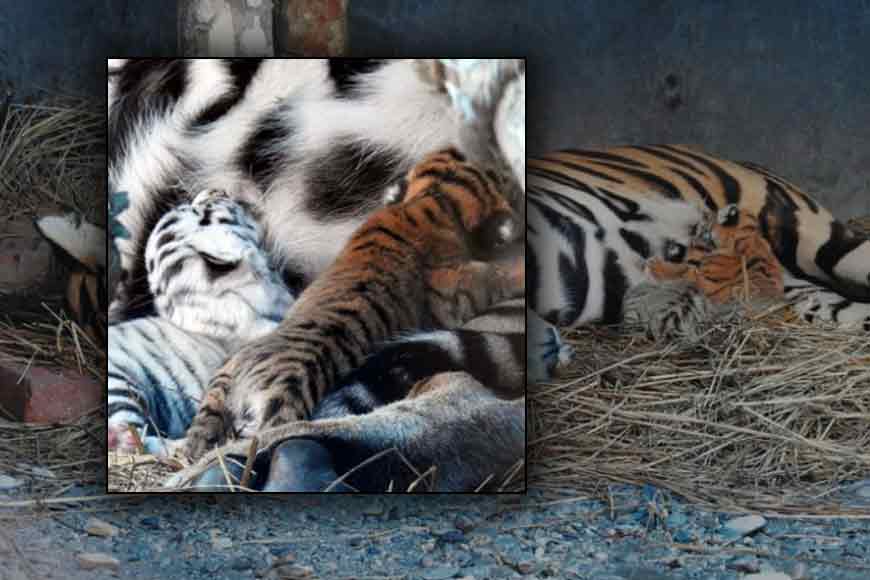How was a White Tiger cub born in Siliguri?

Shubhobroto Ghosh is author of the Indian Zoo Inquiry and Project Manager of Wildlife at World Animal Protection in India
Expectedly, there is buzz around the birth of a white tiger cub in Bengal Tiger Safari, near Siliguri on 18 May, 2018. The white cub birth, of a litter of three, is the offspring of Sheela, a tigress in the safari and is considered to be a rare occurence at the facility. It goes without saying that white tigers are a prized variety of animal, on account of their pigmentation and their comparative rarity in captivity.
White tigers appear distinctive due to the colour of their fur. Compared to normal coloured tigers, white tigers tend to grow faster and heavier and the large size of white tigers was observed by the late tiger expert, Professor Ratan Lal Brahmachary. The origin of white tigers is of considerable interest to wildlife enthusiasts, because of historical and scientific reasons. A white tiger named Mohan was the founding father of the white tigers of Rewa. He was captured as a cub in 1951 by the Maharaja of Rewa, whose hunting party in Bandhavgarh found a tigress with four cubs, one of which was white. All of them were shot except for the white cub, who was taken alive into custody and later named Mohan.
Mohan was later bred with other tigers and produced white tiger cubs who perpetuated his lineage that survives to this day. The genetics of white tigers has long intrigued scientists. The white fur is caused by a lack of the pigment pheomelanin, which is found in normal coloured tigers. This had long been assumed due to a mutation in the gene for the tyrosinase enzyme. Recent genomic analysis has demonstrated that a mutation in the SLC45A2 gene is responsible. The resultant single amino acid substitution appears to block passage of molecules through this transport protein, and by a mechanism yet to be determined this causes the elimination of pheomelanin expression. This is a recessive trait, meaning that it is only seen in individuals that are homozygous(carrying identical genes for both chromosomes) for this mutation.
Although it is a widespread popular assumption that all white tigers are descended from the Rewa lineage of Mohan, it is not so. There are several distinct white tiger lineages, including, the white tiger lineage of Nandankanan in Odisha. Three white tigers were born in the Nandankanan Zoo near Bhubaneswar, Odisha, India in 1980. Their parents were a normal coloured father–daughter pair called Deepak and Ganga, who were not related to Mohan or any other captive white tiger. One of their wild-caught ancestors must have carried the recessive white gene, and it showed up when Deepak was mated to his daughter. Deepak's sister also turned out to be a white gene carrier tigress. These white tigers are therefore referred to as the Odisha strain, and are independent of the Rewa strain of white tigers founded by Mohan. There are reports of independent white tiger lineages in USA as well. Of course, all this begs the question of the conservation status of the white tiger, which is a whole debate in itself. One only hopes the new white tiger cub born in Bengal Tiger Safari will be offered the best facilities and the highest standard of animal husbandry that will make his life tolerable in captivity.








